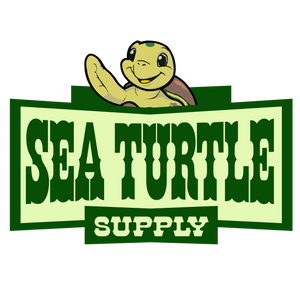
Environmental and wildlife protection efforts can easily form a mental swamp of bland and hard to envision calls for funding to perform conservation. But when it comes to sea turtles, what are some of the specific actions that are undertaken by organizations dedicated to preserving and protecting sea turtle habitat? How do they even begin to tackle a problem that spans entire oceans? Here is a generalized list of the most common efforts undertaken to ensure that sea turtles have a healthy environment to thrive in.
Beach Cleanups:
This first tactic seems rather generalized. But according to the Plastic Pollution Coalition Sea turtles are severely impacted by plastic pollution through ingestion, which can cause fatal blockages, starvation, and internal injuries, and entanglement, where they become trapped in plastic debris like fishing nets, leading to drowning or immobility. Plastic pollution also disrupts nesting by altering sand temperatures and introduces chemicals that can cause hormonal imbalances and reproductive problems. So it has a very direct impact on sea turtles.
Nest Protection and Relocation:
Volunteers patrol beaches to find and protect nests from poachers and predators, sometimes relocating vulnerable eggs to safer sand incubators or areas where they are less likely to be washed away by erosion. If you live in an area of the USA where sea turtles come ashore you can almost certainly find a group that helps with this area of conservation.
Habitat Designation:
Conservation groups work to establish and maintain MPAs, which are critical areas where sea turtles feed and reproduce, and promote land-use practices that ensure the safety of these habitats. A good example of how this works can be found on the Loggerhead Marine Life Center website.
Bycatch Mitigation:
Organizations partner with fisheries to advocate for and implement turtle-friendly fishing gear, such as specialized hooks and turtle excluder devices (TEDs), to prevent accidental capture of turtles.
Some good examples include:
- Fishtek Marine: This engineering company specializes in "smart fishing gear" to mitigate the environmental impact of commercial fishing. They design and manufacture technologies to reduce the bycatch of marine species, including turtles.
- Lift Labs, Inc.: Supported by NOAA, this company is developing a ropeless fishing gear system. The technology eliminates the vertical buoy lines that can entangle marine animals, including sea turtles, when not actively recovering traps.
- Sportfish Products: This vendor, available through retailers like Grumpy's Tackle, makes smaller turtle excluder devices for commercial-style crab pots.
- Net shops: These commercial companies manufacture and sell TEDs for use in trawl nets, particularly for the shrimp industry. NOAA works with these companies to distribute the gear to fishermen.
- Anova Food and Culimer BV: These seafood suppliers have partnered with the World Wildlife Fund (WWF) to source tuna caught with circle hooks from fishermen in the Coral Triangle
Public Education:
By visiting schools and community centers, conservationists educate the public about the impact of plastic pollution and responsible practices, such as reducing plastic use and not releasing balloons.
Volunteers and scientists monitor sea turtle populations by observing and counting turtles and other marine species to assess ecosystem health
Satellite Tracking:
Using satellite technology, organizations track turtle movements to identify and prevent interactions between turtles and fishing areas, helping to create safer fishing practices. The New England Aquarium and Sea Turtle Conservancy both work in this area.
Programs document nesting activity and monitor nests, collecting data on hatching and emergence success to understand the overall health of the turtle population. A good example of this work can be found at the Clearwater Marine Aquarium.
Because sea turtles range all over the world a big part of what conservation organizations do is focused on encouraging the methods they employ in the USA in places like Asia and Latin America. This is also why tracking the turtle population and it’s movements is important, so the world wide scope of various issues can be seen and resources can be put to use more effectively.

